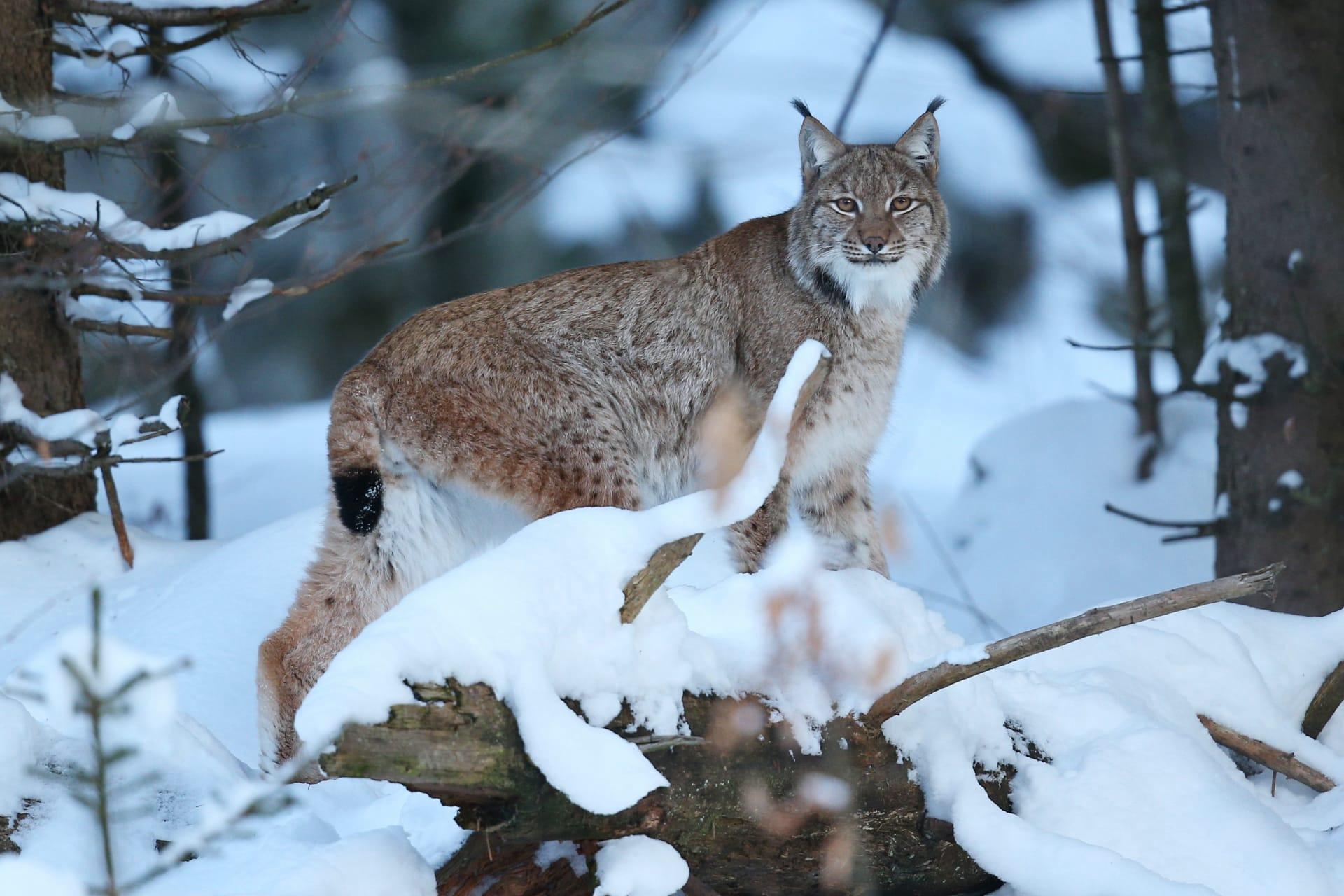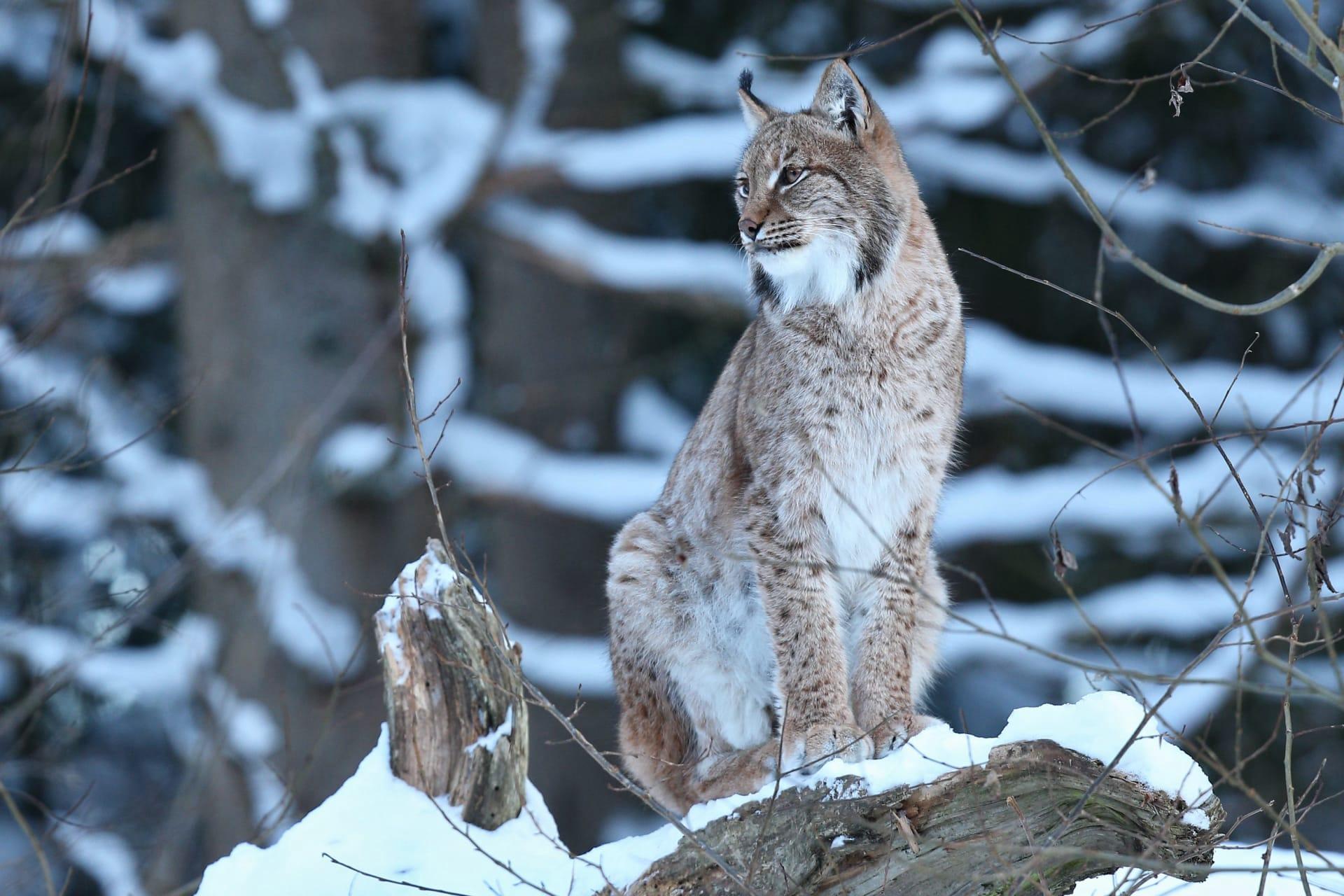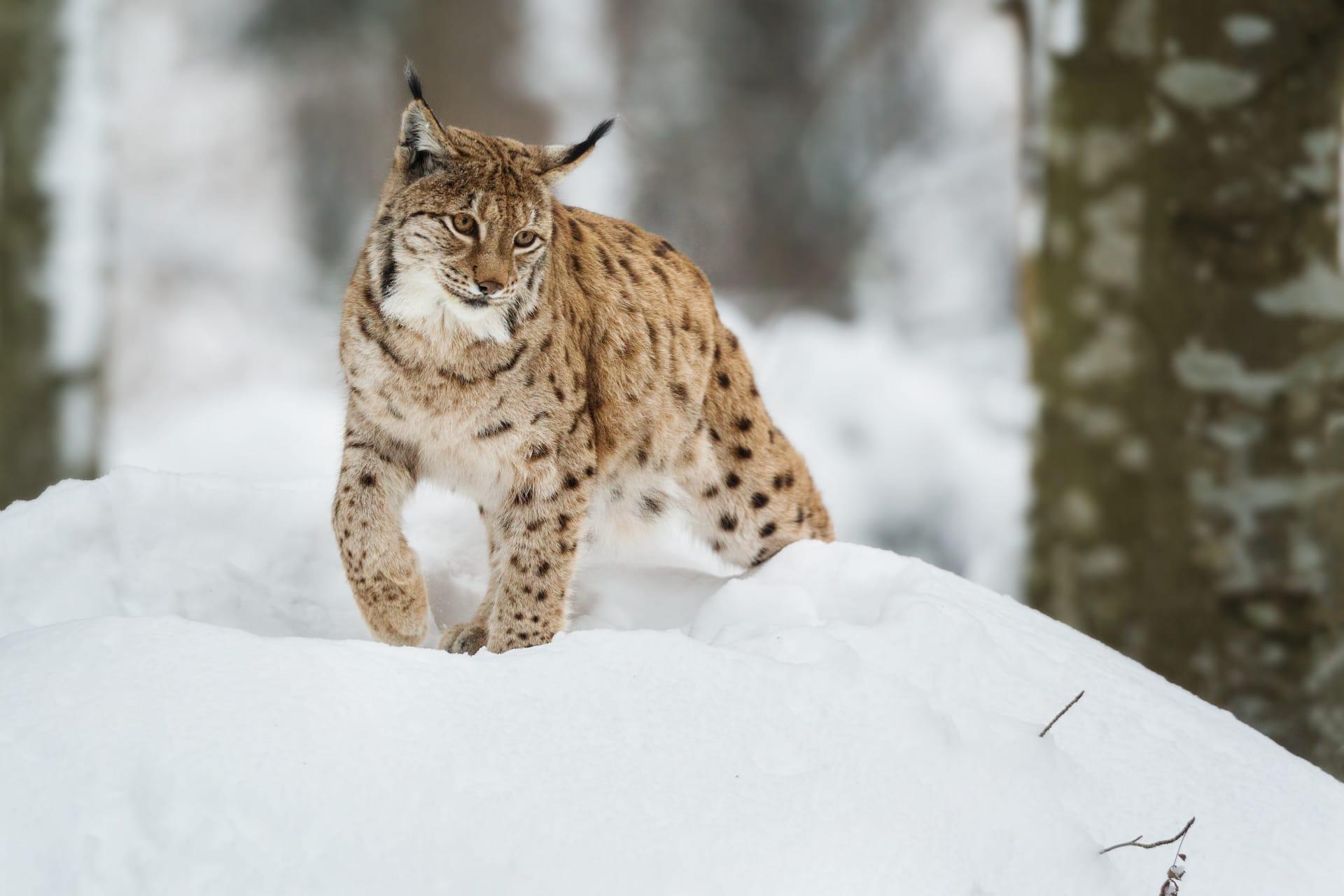1
The European Lynx, a magnificent feline, can leap an impressive distance thanks to its powerful hind legs. These big cats can jump up to 25 feet (about 7.6 meters) horizontally, which is roughly the length of a school bus. This remarkable ability is not just for show; it's crucial for hunting in the dense forests of Europe, where agility can mean the difference between a successful hunt and going hungry.
Their sense of hearing is equally impressive. Lynxes have tufted ears that enhance their auditory perception, allowing them to detect the slightest rustle of leaves or the faintest footsteps of prey. This acute hearing is vital in their forested habitats, where visual cues can be scarce. The ear tufts, which can grow up to 1.5 inches (around 4 cm) long, act like natural parabolic sound dishes, funneling sounds directly to their eardrums.

2
European Lynxes have a distinctive coat pattern that serves as a highly effective camouflage. The pattern, consisting of black spots and streaks on a gray or reddish background, blends perfectly with the dappled light of the forest, making them almost invisible to prey. This camouflage is especially useful during winter when the lynx hunts in snow-covered terrain.
Another fascinating feature of the European Lynx is its ability to survive in diverse climatic conditions. These animals are found in a range of environments, from the snowy forests of Scandinavia to the mountainous regions of the Carpathians. They have adapted to these varied climates by developing thick fur that grows denser in colder regions, helping them maintain body heat in freezing temperatures.

3
Did you know European Lynxes are solitary creatures? Unlike some other big cats that live in groups, these lynxes prefer a life of solitude. They are highly territorial and use scent markings to communicate with other lynxes, ensuring they maintain a comfortable distance from each other. This solitary nature is a key aspect of their survival strategy, as it reduces competition for food.
European Lynxes have a unique hunting style. They are ambush predators, meaning they lie in wait for their prey rather than chasing it over long distances. This hunting method conserves energy and increases their chances of a successful catch. They mainly feed on small to medium-sized animals like hares, rodents, and even young deer.

4
Regarding reproduction, the European Lynx has a very distinct breeding season. Mating usually occurs in late winter, and the female gives birth to a litter of one to four kittens in spring. The mother raises the kittens alone, teaching them essential survival skills over a period of about ten months before they venture out to establish territories of their own.
The European Lynx plays a crucial role in its ecosystem as a top predator. By controlling populations of herbivores like deer and hares, they help maintain a healthy balance in their habitat. This balance is vital for the overall health of the ecosystem, ensuring that vegetation is not overgrazed and that smaller animal populations are kept in check.

5
Despite their robust appearance, European Lynxes face several threats, primarily from habitat loss and fragmentation. As forests are cleared for agriculture and urban development, lynxes lose their natural hunting grounds. This encroachment also leads to increased interactions with humans, sometimes resulting in conflict.
Another interesting fact about European Lynxes is their vocalization. Unlike many other big cats, lynxes are relatively quiet. They do not roar but communicate through a range of other sounds, including purrs, growls, and chuffs. These vocalizations are essential for communication during mating season and for mothers to call their kittens.